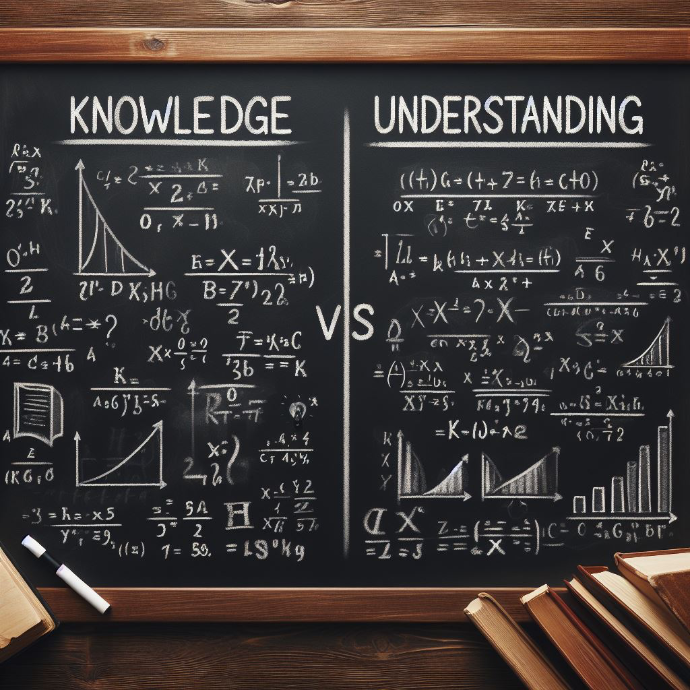
March 15, 2024
Knowledge vs Understanding: Unravelling the Distinction
As students, it's essential to grasp the nuances of these concepts to enhance our mathematical journey.
1. Knowledge: The Foundation
- Knowledge refers to the facts, skills, and information we acquire through education and experience. It's the bedrock of mathematical learning. Imagine it as the bricks that construct the walls of a house. Here are some key aspects of mathematical knowledge:
- Procedural Knowledge: This aspect involves performing facts, algorithms, and step-by-step procedures. Think of it as knowing how to solve equations, calculate derivatives, or find the area of a triangle. It's like having a toolbox with specific tools for specific tasks.
- Memorisation: Memorising multiplication tables, formulas, and definitions falls under this category. While it's essential, it's not the whole picture.
2. Understanding: Beyond Memorisation
- Understanding: on the other hand, transcends mere memorisation. It's about actively making sense of mathematical concepts, reasoning, and connecting ideas. Consider it as the blueprint that guides the construction of the house. Here's what understanding entails:
- Conceptual Understanding: This involves comprehending the "why" behind mathematical ideas. It's not just about knowing the formula for the area of a circle; it's about understanding why that formula works. Conceptual understanding enables us to see patterns, relationships, and connections.
- Problem-Solving Skills: When we truly understand math, we can apply our knowledge to solve real-world problems. It's not about regurgitating facts but about using them creatively. Problem-solving involves reasoning, communication, making connections, and representing mathematical ideas.
3. Cultivating Understanding
How can students foster understanding alongside knowledge?
- Active Engagement: Actively engage with math tasks. Use varied strategies, justify solutions, and connect to prior knowledge and experiences. Instead of mechanically applying formulas, seek the "why" behind them.
- Real-Life Applications: Explore how math applies to everyday situations. Understand why we calculate interest rates, analyse data, or design bridges. Real-life contexts deepen understanding.
- Building Bridges: Connect new concepts to what you already know. Imagine mathematical ideas as interconnected bridges. When you cross one bridge, you're closer to understanding the entire landscape.
4. The Journey Ahead
As students, strive for both knowledge and understanding. They complement each other. Knowledge provides tools, while understanding empowers you to wield those tools effectively. So, let's build a sturdy mathematical house—one where knowledge and understanding coexist harmoniously.
Remember, it's not about choosing between knowledge and understanding; it's about embracing both on your mathematical voyage! 🌟
Feel free to share your thoughts and experiences in the comment field below!
References:
1. Al-Mutawah, M. A., Thomas, R., Eid, A., Mahmoud, E. Y., & Fateel, M. J. (2019). Conceptual understanding, procedural knowledge, and problem-solving skills in mathematics: High school graduates' work analysis and standpoints. International Journal of Education and Practice, 7(3), 258-273.
2. Japan Math. (n.d.). “Understanding” Versus “Knowledge” – What’s The Difference?. Retrieved from [here](https://japan-math.com/blogs/news/understanding-versus-knowledge)
3. BYJU'S. (n.d.). Difference between Knowledge and Understanding | Knowledge vs Understanding.. Retrieved from [here](https://byjus.com/english/difference-between-knowledge-and-understanding/)The Importance of Early Numeracy Skills.
Leave a Comment
Please note - comments need to be approved before posting.